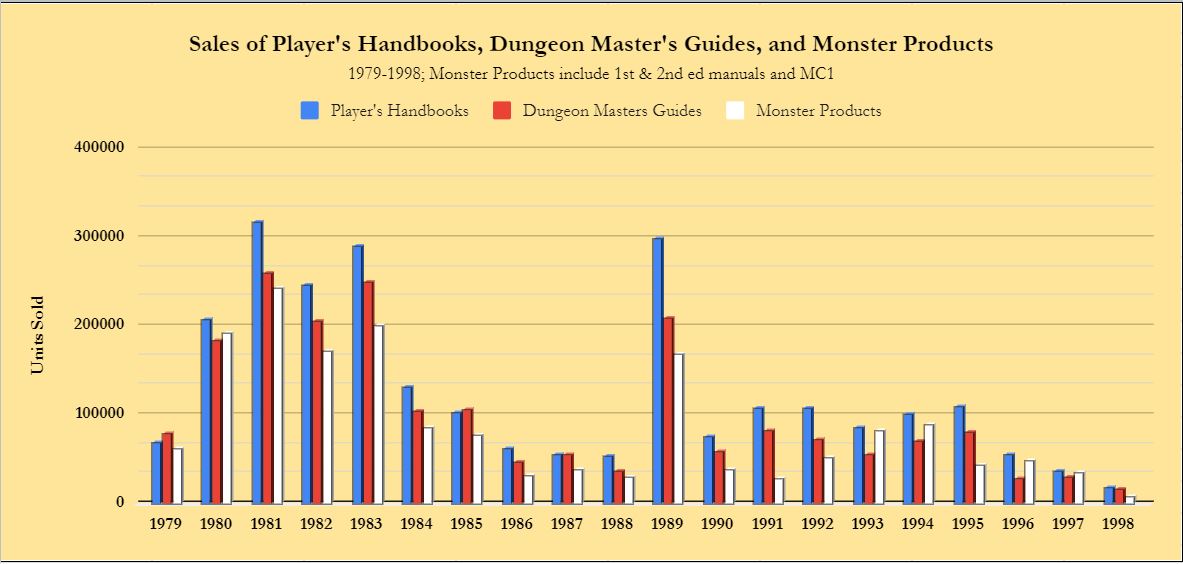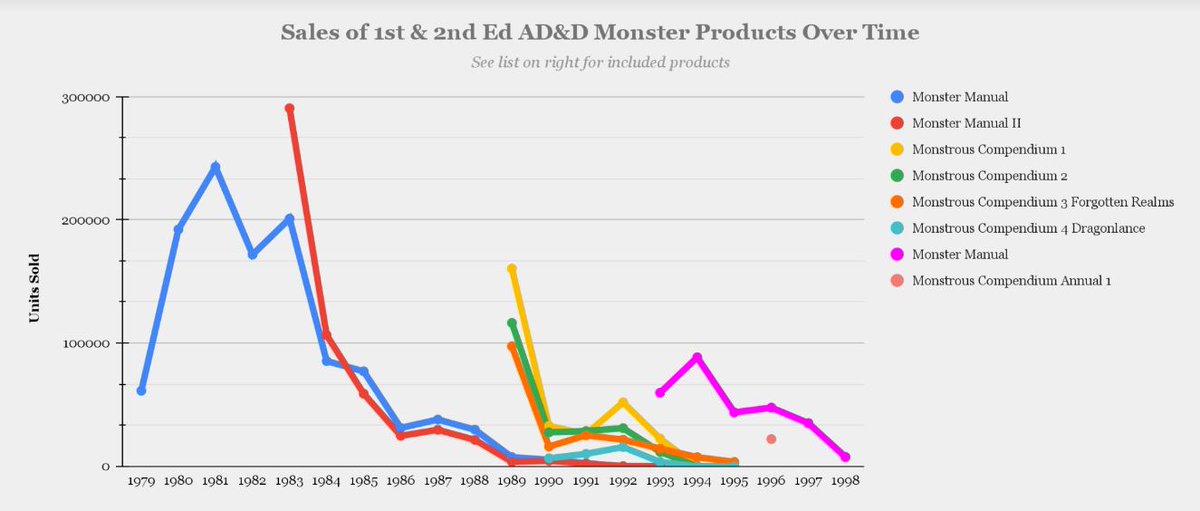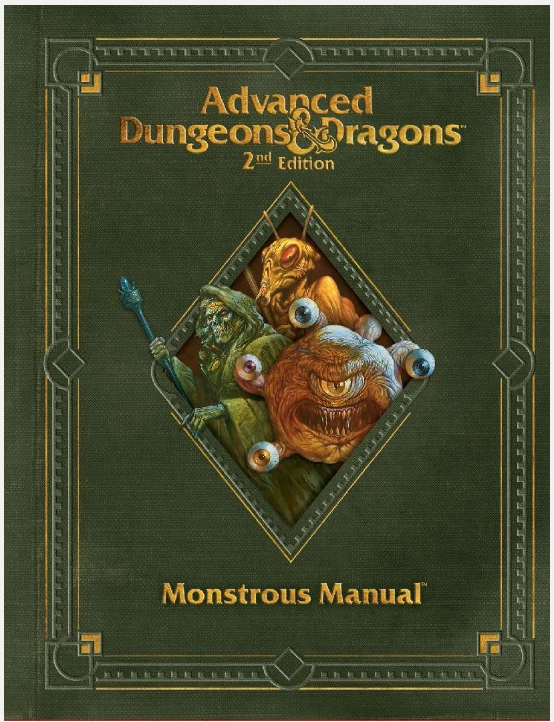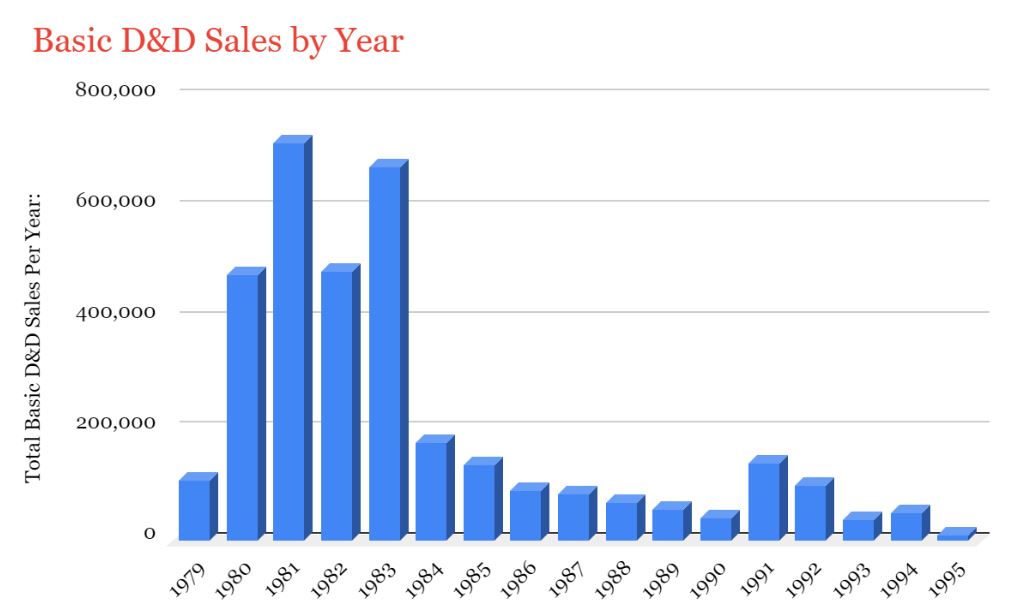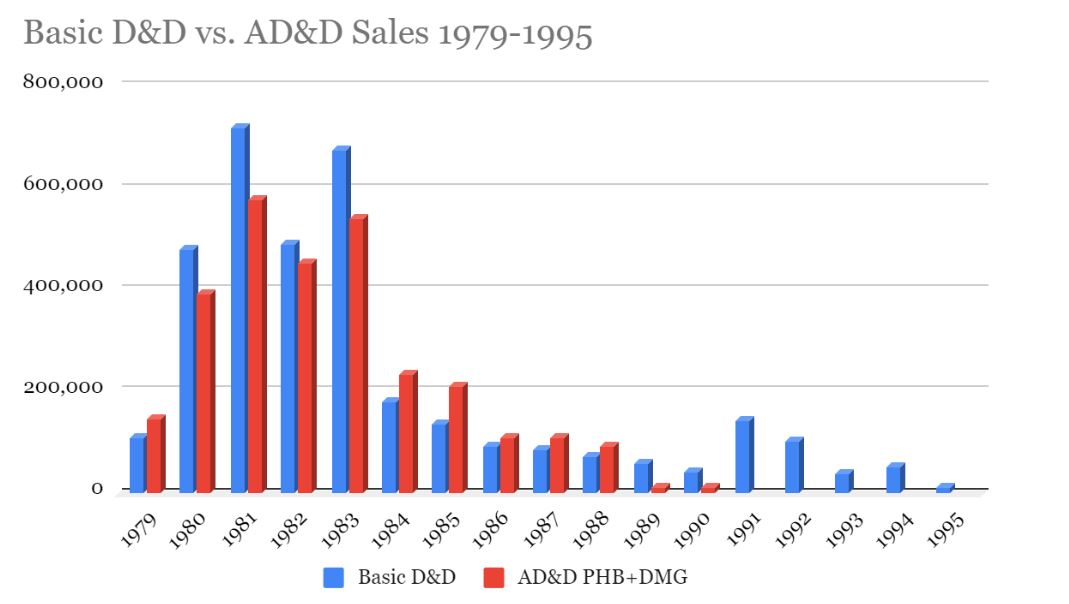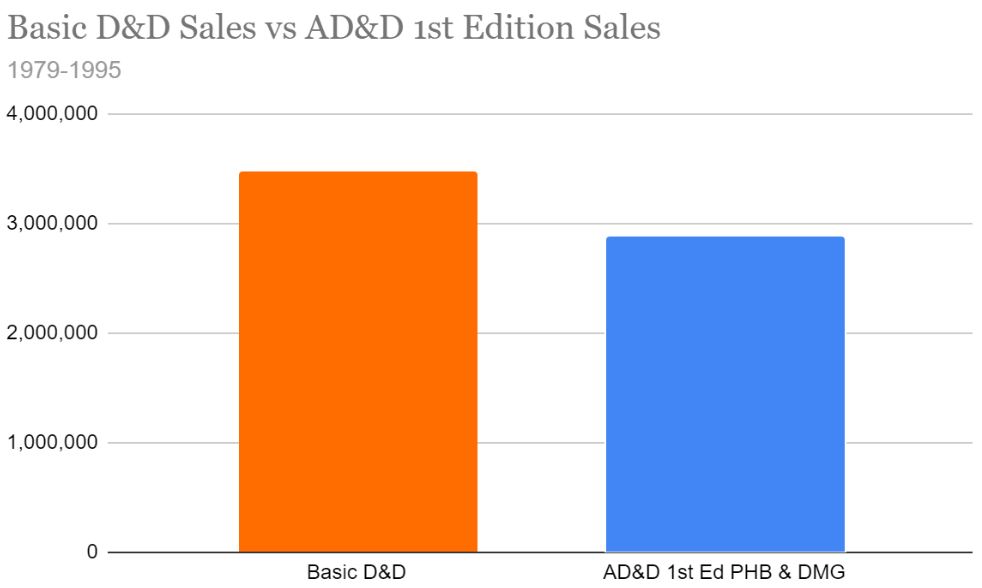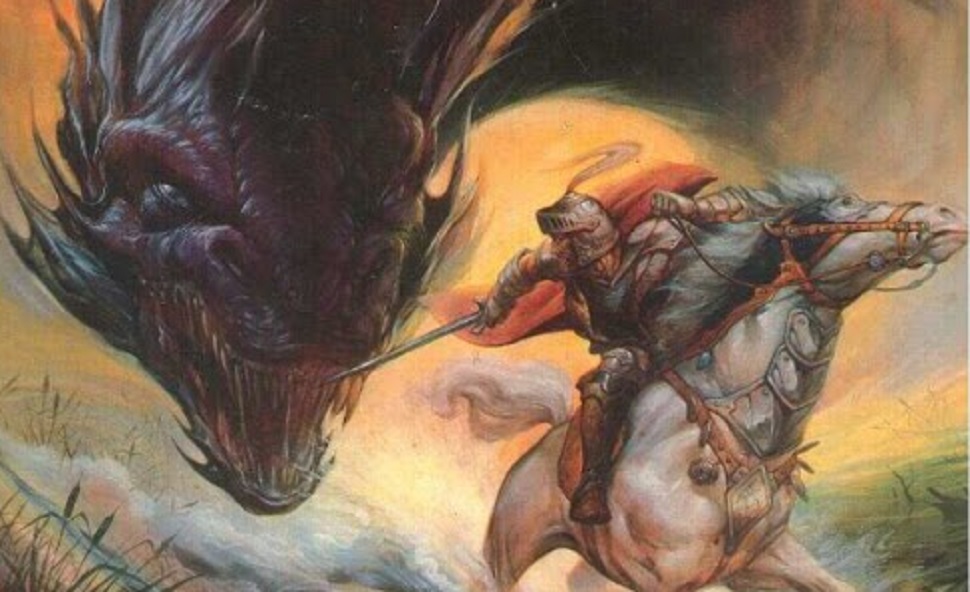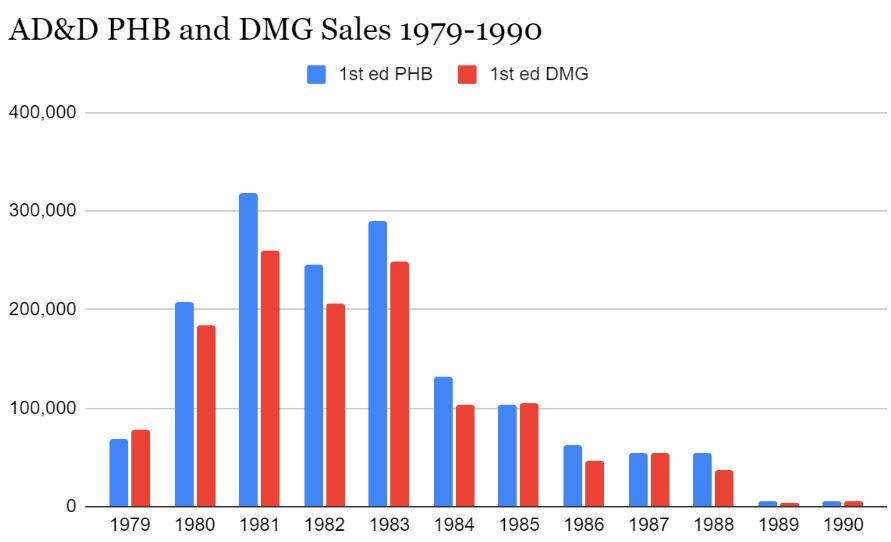The Golden Age of TTRPGs is Dead
We are watching a bright and special time in the TTRPG industry pass away before our eyes.
Around the start of the 2010s, we saw the dawn of a new golden age of tabletop roleplaying games.
We are watching a bright and special time in the TTRPG industry pass away before our eyes.
Around the start of the 2010s, we saw the dawn of a new golden age of tabletop roleplaying games.
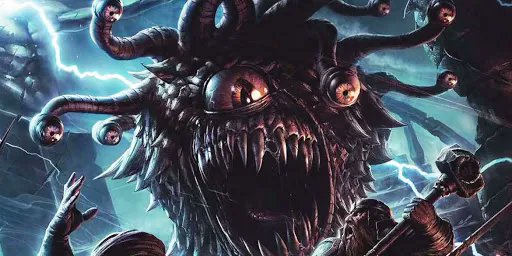
Since then, huge numbers of new players have found the hobby thanks to Stranger Things and actual plays like Critical Role. These new fans discovered a vibrant and thrumming TTRPG industry.
There was the D20 fantasy family of games, dominated by D&D 5E, but rich with other games published under the OGL and the fertile depths of the Old School Renaissance.
There were other mainstream publishers with storied brands, such as Call of Cthulhu, Deadlands, and Shadowrun. Lastly, there was a flourishing indie TTRPG scene that revolutionized what a TTRPG was, such as Apocalypse World.
There were other mainstream publishers with storied brands, such as Call of Cthulhu, Deadlands, and Shadowrun. Lastly, there was a flourishing indie TTRPG scene that revolutionized what a TTRPG was, such as Apocalypse World.ts bearing a ring ended the Third Age of Middle-earth
This influx of gamers created a rising tide that lifted all boats. Novice gamers started out playing D&D 5E, yes, but went on to discover other great games. Because of the OGL, countless companies and designers could make money creating for D&D 5E.
Because of the increasing number of gamers, even strange, freaky, or weird TTRPG ideas could find an audience. Have you heard of Apollo 47 Technical Manual the RPG?
But recent developments make clear that this radiant golden age is ending, as surely as the steam engine ended the age of sail, or hobbits bearing a ring ended the Third Age of Middle-earth.
The Doom of Our Time Approaches
In the wake of the Open Gaming License scandal of this past winter, a number of companies have successfully launched new TTRPGs intended to move them past the possibility of Wizards of the Coast ever threatening their businesses ever again.
In the wake of the Open Gaming License scandal of this past winter, a number of companies have successfully launched new TTRPGs intended to move them past the possibility of Wizards of the Coast ever threatening their businesses ever again.
Some of the games grossed millions in crowdfunding campaigns. All have been positively reviewed.
Some cite the success of these games, which are intended to replace 5E/OGL content for the companies involved, as signs of the continued health and growth of the TTRPG industry
Some cite the success of these games, which are intended to replace 5E/OGL content for the companies involved, as signs of the continued health and growth of the TTRPG industry
They are not.
Rather, they are signs that the industry has peaked, and may be about to enter a decline.
Why?
Rather, they are signs that the industry has peaked, and may be about to enter a decline.
Why?
After the Open Gaming License crisis of 2023, I became pessimistic about the damage the attempt to kill the OGL had done to our hobby. Others told me that the result of the crisis would be the blooming of a thousand flowers.
Discouraged from using 5E by Wizards of the Coast’s attempt to kill the OGL, we would all get amazing new TTRPGs.
Maybe every single one of those new TTRPGs is going to be amazing. Maybe every one will be so fun and so captivating that lawns will go unmowed, pets unfed, and diapers unchanged because we are all so busy playing one of those games.
The problem is the TTRPG business is devilishly difficult. Only very rarely does the creation of a phenomenal game actually lead to financial success.
And the death of the OGL and the creation of these games has fundamentally changed the industry in such a way that it will be harder for those companies to make money in the future. A difficult business is about to become more difficult.
Consider the state of the industry a mere eighteen months ago; countless publishers, from MCDM and Kobold Press to Wizards of the Coast, were all making 5E material; it was easy to purchase products from multiple publishers because if you were running 5E,
you could use the work of all these companies at your table; this made it easier for companies to share customers.
The new TTRPGs birthed by the OGL crisis are about to make that sort of customer sharing much, much harder.
The new TTRPGs birthed by the OGL crisis are about to make that sort of customer sharing much, much harder.
MCDM is publishing a TTRPG where you roll 2D6 to hit. Pathfinder’s 2nd edition remaster has no alignment and changed ability scores.
Critical Role has dropped 5E like a dead cockroach and is playtesting its own new fantasy game, Daggerheart, which uses 2D12s, and a horror game named Candela Obscura.
And of course, there is the rising Godzilla that is 6th edition D&D, which scientists say will attack our shores in the spring of 2024. So far, there is no hint of an OGL for whatever that game will be.
The problem is, 5E was not just a game. It was a massive community of players. Countless companies could thrive making products for that community.
These new games are a shattering of that community.
These new games are a shattering of that community.
Instead of countless companies working to make your 5E game better, they are now asking you to become MCDM, or Darrington Press, or Paizo, or D&D 6E players.
We are entering an era of division, faction, and balkanization.
We are entering an era of division, faction, and balkanization.
The companies are now asking fans to choose sides. It also means that it is going to become more difficult for them to share customers. How interested will a Pathfinder fan be in an MCDM product? Or 6th edition? History suggests these sorts of barriers depress sales.
All This Has Happened Before
In the 1990s, TSR, the first company to publish Dungeons & Dragons, embarked on publishing setting after setting after setting for the game. By 1997, over a dozen settings were sold by the company.
In the 1990s, TSR, the first company to publish Dungeons & Dragons, embarked on publishing setting after setting after setting for the game. By 1997, over a dozen settings were sold by the company.
Fans stopped being fans of D&D, and instead became fans of a particular setting, and would only buy products for that setting
In 1997, TSR was near death as setting releases had plummeted from the hundreds of thousands of copies in the 1980s, to a mere 7,152 copies sold for the Birthright campaign setting in its first year of release.
D&D was only saved from a terrible fate by Wizards of the Coast and their fat stacks of cash. They purchased TSR in the summer of 1997.
Some might say it is unfair to compare the different settings of the 90s to the different systems of today. Settings and systems are different, after all. And I do agree with the point.
Switching systems is a BIGGER ASK than switching settings, therefore this change should have a LARGER IMPACT ON SALES.
And it is all happening again. The TTRPG audience is fracturing at the seams, and it will hurt sales and growth.
To focus only on MCDM, this current BackerKit is likely the most successful campaign the company will ever see.
To focus only on MCDM, this current BackerKit is likely the most successful campaign the company will ever see.
Every campaign after this will struggle to get the same sort of sales numbers as people slowly bleed away to the competition. Paizo will say check out our competing fantasy game.
WotC will batter us all with a punishing wave of marketing trying to convince all of us of the newness and hotness of D&D 6th edition. (May it be both new and hot! But I have my doubts…) And fans will bleed away.
Furthermore, what will happen to the YouTube channel that is the foundation of MCDM’s success? Matt Colville is a master communicator and was a major evangelist for D&D in his channel’s heyday.
He is passionate, intelligent, and inspiring. If Dungeon Masters could go into the locker room and get a pep talk from their coach in the middle of a game of D&D, that coach would be Matt Colville.
How much time is Colville going to devote to D&D now that it is essentially his competition?
In the past year, he has put out less than 20 videos on his channel.
In the past year, he has put out less than 20 videos on his channel.
Those videos now range widely in topic, from TV reviews and interviews with language scholars to some D&D content, and a discussion of the creation of his new RPG.
Go back five years, and Colville was putting out video after video after video of fantastic advice about running D&D, usually with 5E as the default. He dispensed some of the best advice on TTRPGs I have ever seen.
But it appears his content is fundamentally shifting, and he is asking that his audience go with him somewhere new.
Let’s look at MCDM’s recent efforts from the point of view of Wizards of the Coast. It is all ruin, disaster, and calamity.
Master communicator and D&D fanatic Matt Colville has gone from convincing people to try D&D, and explaining how best to play D&D, to instead asking his 439,000 subscribers to stop playing D&D and play his game instead.
Not to mention that Critical Role—a huge reason for the recent surge in popularity of D&D—is likewise stopping their support of D&D, and asking their 2.1 million YouTube subscribers to start playing one of their two new games instead.
I will not mention that, lest it further trouble the sleep of the D&D people at Wizards of the Coast… (What if 2.1 million people simply don’t buy 6th edition?)
In summary, all these events are interfering with the developments that created the golden age of TTRPGs. The removal of D&D from Critical Role likely hurts everyone involved.
For years, Critical Role’s pitch was “Watch voice actors play D&D!” (A concept even my 80-year-old Aunt Sonja understands.) Now, the pitch is “Watch voice actors play Candela Obscura!”
But what is Candela Obscura? (If asked, Aunt Sonja might guess Candela Obscura was a potpourri scent.) The brand recognition that drove people to Critical Role is gone.
Simultaneously, the splintering of the D&D 5E community will make it harder for new designers to break into the industry, and harder for established companies to attract new customers. Growth in the TTRPG field will slow.
What the Future Might Look Like
And if I’m right, and this is how the golden age of TTRPGs dies, certain things follow naturally from these events. Here are my predictions—Prophecies?—that I may be held accountable for my rashness in writing all this down.
And if I’m right, and this is how the golden age of TTRPGs dies, certain things follow naturally from these events. Here are my predictions—Prophecies?—that I may be held accountable for my rashness in writing all this down.
I may be wrong, but if I’m right, the following things seem likely to pass:
Sixth edition will not do as well as 5th edition. Even more firings will follow. Wizards, which struggled to know what to do with D&D when it was a success (No Honor Among Thieves Starter Set? Really?) will be flummoxed by what to do with it when it is perceived as a failure.
No MCDM RPG crowdfunding campaign will ever do better than this initial campaign to fund its TTRPG.
Kobold Press’s post-OGL game, Tales of the Valiant, has been criticized for being too similar to 5E. For Kobold Press, I see two futures. Perhaps they will slowly bleed fans in the same way that MCDM will.
But if D&D 6th edition is too different, and people really don’t want to move on from 5E, Kobold has positioned themselves to be the next Paizo, and Tales of the Valiant, the next Pathfinder.
The frequency of million-dollar TTRPG Kickstarters will decrease.
Attendance at major gaming conventions will plateau.
Attendance at major gaming conventions will plateau.
TTRPGs will become less interesting. Less exciting. Less creative. And despite all the new systems, it will also grow less diverse as it becomes even harder to make money in a TTRPG community broken into factions.
And so a golden age ends sputters out.
Unless something truly dramatic and game-changing hits the industry.
Unless something truly dramatic and game-changing hits the industry.
What could change this grim future? I suppose a group of publishers coalescing around a single system might change matters.
Or something truly inconceivable, something like giving 6th edition D&D an OGL, or putting the rules in the Creative Commons.
Or something truly inconceivable, something like giving 6th edition D&D an OGL, or putting the rules in the Creative Commons.
And after last month’s blood sacrifices upon the altar of profitability, who is even left at Wizards with the power and experience to advocate for such a thing?
It has been a grand era to be a gamer, one which we have been fortunate to live through.
It has been a grand era to be a gamer, one which we have been fortunate to live through.
• • •
Missing some Tweet in this thread? You can try to
force a refresh




